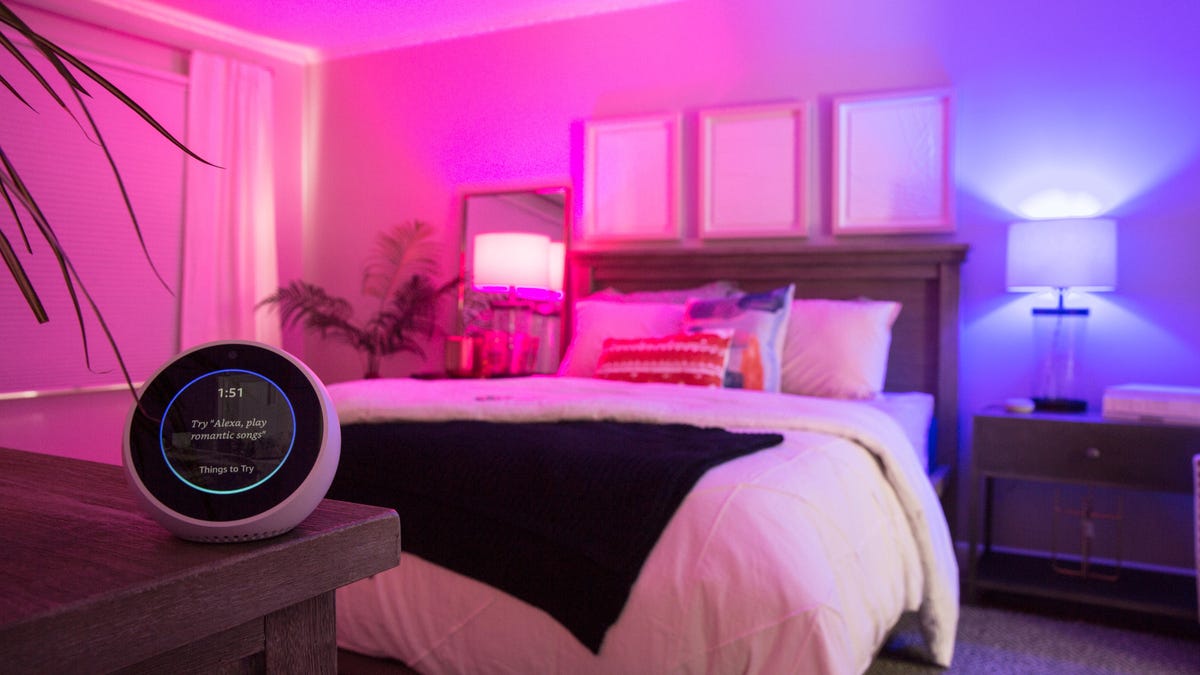How to schedule your lights to turn on and off
If you have smart bulbs in your home, they should be on a schedule. Here are three ways to do just that.

We've said it many times, but one of the first gadgets you should consider adding to your smart home is a smart bulb. They're relatively affordable, nearly effortless to install and -- in general -- work well with most of the other smart devices you'll eventually add to your home.
Smart lights are convenient in a multitude of ways, such as automatically coming on as you turn down your street, helping deter would-be burglars and waking you up more naturally than an abrupt alarm.
One of the first things you should do with smart bulbs, however, is create a schedule for them to operate on. Here's how.
Use the companion app
The most obvious way to schedule smart lights is to use the bulb's companion app. Grouping and scheduling lights is a common feature these days.
How to schedule lights will differ from app to app, but for instance in the Lifx app, you tap the plus sign in the top right corner and select New Schedule. Select a time, how often it should repeat, which lights, brightness and color (if applicable).
Try scheduling the lights to come on in the morning when you wake up each weekday for work, another schedule that turns the lights on a few minutes before you get home each day and another for when you should go to bed.
Using routines with Alexa or Google Home
I would only recommend scheduling your lights with the native app if you don't have other smart home devices. However, if you have a Google Home or Alexa speaker and other connected devices around the house, you should use the smart speaker as the hub for your home.
Both the Google Home and Alexa speakers have a feature called routines that allow you to assign a custom phrase that will trigger multiple actions (such as turning off the lights, locking the doors, changing the temperature and playing music).
Routines can also be run on a schedule, meaning you can create a schedule that controls your lights, the TV, the thermostat, door locks and more.
To learn how to create a routine with your smart speaker, read our guide for Google Home or Alexa speakers.
Smart speakers have replaced the need for a hub like SmartThings for many people. That said, routines aren't exclusive to smart speakers. If you have a SmartThings hub or have no desire to own a smart speaker, you can accomplish the same effect with a smart hub.
With IFTTT
If neither of those options are available to you or you have smart home devices that don't work with Google Home, Alexa or a smart hub, there is a third option: IFTTT.
IFTTT is short for If This Then That. It's a third-party service that specializes in making connected apps and devices communicate. For instance, you can have your smart lights turn red when your boss emails you or flash when your Uber arrives.
To create an applet on IFTTT that controls your smart lights on a schedule:
- Go to ifttt.com and sign in or create an account.
- Click on your username in the top right corner of the page and select New Applet from the drop-down menu.
- Click This and select Date & Time from the list of services.
- Choose Every day at or Every day of the week at.
- Select the time of day and days of the week that the applet should run, then click Create trigger.
- Click That to advance.
- Then search for your smart bulb brand from the list of action services. You'll need to connect your account to IFTTT.
- After the two accounts are connected, choose Turn lights on and select which lights should be controlled by the applet, the brightness, color, etc.
- Click Create action followed by Finish to complete the applet.
This type of IFTTT applet only controls one service at a time. To get around this, you can create multiple applets set to the same time and day that controls your other smart home devices. Or you can use IFTTT Maker, a feature that was rolled out last year that lets you create applets with multiple actions.
Now that your lights are on a schedule, here are four things you should consider before making the rest of your home smart.
And this is the one thing every smart home needs.

